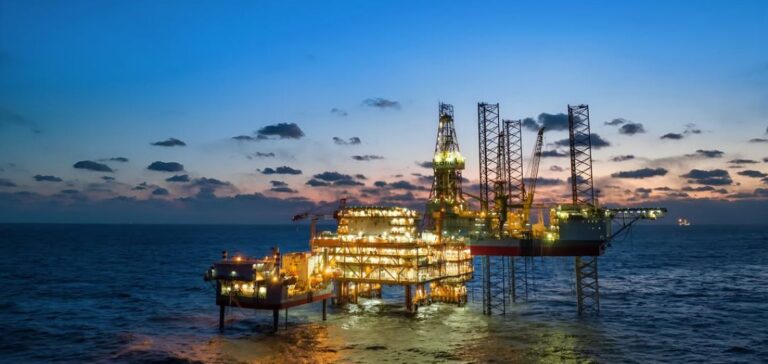The Bozhong 26-6 oilfield development project, operated by CNOOC Limited, has officially commenced production. Located in central Bohai Bay, this offshore site has an average depth of 20 meters and serves as a key infrastructure for the region’s energy supply.
A large-scale project in Bohai Sea
The oilfield development relies on a new central processing platform and an unmanned wellhead platform. The entire project consists of 33 development wells, including 22 production wells, 10 gas injection wells, and one water source well. This configuration aims to maximize oil extraction while ensuring optimal energy efficiency.
Bozhong 26-6 is recognized as the world’s largest metamorphic buried hill oilfield, with cumulative proven hydrocarbon reserves exceeding 200 million cubic meters. Thanks to standardized engineering, the time from discovery to production was reduced to three years, a notably short period for this type of infrastructure.
Production targets and outlook
According to forecasts, the project will reach a production capacity of 22,300 barrels of oil equivalent per day in 2025. The extracted oil is classified as light crude, a characteristic that facilitates its processing and commercialization.
CNOOC Limited has integrated advanced technologies to enhance project profitability. The Bozhong 26-6 oilfield includes a system for capturing and reinjecting carbon dioxide (CO₂) generated during extraction. This technology optimizes recovery by using CO₂ to improve well efficiency while limiting emissions. The project is expected to store approximately 1.5 million tons of CO₂ over its entire operational cycle.
A key infrastructure for the region
The exploitation of the Bozhong 26-6 field aligns with the strategy of strengthening the energy supply in the Beijing-Tianjin-Hebei region and the Bohai area. The start of production for Phase I represents a significant milestone in the development of offshore complex reservoirs in China.
Mr. Yan Hongtao, President of CNOOC Limited, highlighted the strategic importance of this project, which demonstrates advances in the extraction of offshore buried reservoirs. The integration of extraction and emissions management technologies could also serve as a model for other developments in the region.






















